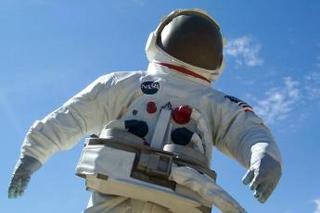NASA releases plans for a new spacecraft that would replace the space shuttle. The vehicle is part of a system that will be capable of putting astronauts on the moon by 2018, laying the groundwork for space travel to Mars. NASA says the new system is designed to be 10 times safer than the space shuttle.
Audio program
The News and Info Blog is a blog (reporting only the news that really matters) for free thinkers, progressives, intellectuals, and students of life everywhere for news, information, and opinion. Feel free to comment if you would like to contribute. Visit our mother site at newsandinfo.org for all the latest news updated very often.
Saturday, September 24, 2005
Tuesday, September 20, 2005
NASA sets target of 2018 for next moon landing

WASHINGTON Combining an old concept, existing equipment and new ideas, NASA has given shape to President George W. Bush's promise to send humans back to the moon by the end of the next decade.
Michael Griffin, NASA's administrator, spelled out a $104 billion plan that he said would send astronauts to the moon by 2018, serve as a steppingstone to Mars and beyond, and stay within NASA's existing budget.
At present, the United States is the only nation with an active, date-specific moon program. China entertains a moon landing and exploration as long-term objectives of its space program.
India's space program is focused on satellites and earth imaging. It recently joined the Galileo project, a European endeavor to compete, via a network of satellites, with the U.S. Global Positioning System, or GPS.
Japan has an extensive space program, but it's ambitions relating to the moon are limited to unmanned probes.
Griffin's announcement Monday laid out a timetable and a budget, putting flesh on the bones of a proposal that Bush announced on Jan. 14, 2004, as he was campaigning for re-election. NASA's glossy new plan will replace the aging shuttles with a new generation of space vehicles meant to rekindle the America's exploratory fires.
But while Americans eagerly accepted President John F. Kennedy's challenge in 1961 to put men on the Moon, Bush's plan to return people there and then voyage onward to Mars is generating skepticism about its feasibility.
More here
Monday, September 19, 2005
Subscribe to:
Comments (Atom)